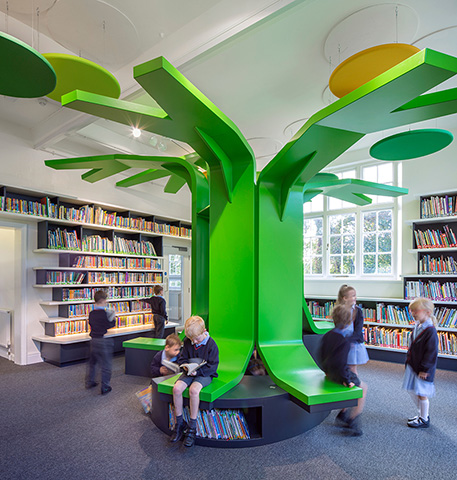Schools Indoor Pollution and Health: Observatory Network in Europe (SINPHONIE)
Thirty-eight universities and institutes from 25 countries participated in this large and complex research project covering the areas of health, environment and climate change in primary schools.

1 November 2010
Thirty-eight universities and institutes from 25 countries participated in this large and complex research project covering the areas of health, environment and climate change in primary schools. The project is implemented under a European Commission service contract (DG SANCO, Health and Consumer Protection Directorate). UCL was the only UK representative on this project actively involved in both modelling and monitoring research tasks. The objectives of the SINPHONIE project were to assess the outdoor/indoor school environment and its impact on health by:
- measuring and assessing physical, chemical and biological parameters found in school classrooms throughout Europe in order to produce new exposure dataset by taking into account buildings as modifiers of external microclimate
- obtaining data on health status of children and health impacts related to the indoor environment through questionnaires, clinical tests and health impact assessments
- evaluating the impact of climate change on overheating in schools across Europe
In the UK a special attention was paid on current indoor air quality guidelines for school buildings which are framed around thermal conditions, CO2 levels and corresponding ventilation rates without considering specific indoor pollution levels. Drawing on detailed monitoring data from a sample of 18 classrooms (heating and non-heating seasons) from six London schools, behavioural and environmental factors that affect pollution levels in classrooms were analysed and adequacy of CO2 as an overall predictor for indoor air quality evaluated.
- People
PI: Dejan Mumovic
Co-Is: Michael Davies and Derek Clements-Croome (Reading University)
Rs: Hector Altamirano Medina, Lia Chatzidiakou, Akshi Gupta (modelling), Carla Guerriero
- Output
The following publications have been produced as the result of this research project:
- Chatzidiakou, L., Mumovic, D., Summerfield, A., Hong, S.M., and Altamirano-Medina H. (2014) A Victorian school and a low carbon designed school: Comparison of indoor air quality, energy performance, and student health Indoor and Built Environment May 2014 23: 417-432
- Chatzidiakou, L., Mumovic, D., Summerfield, A., 2013. Is CO2 a Good Proxy for IAQ in School Classrooms? CIBSE Technical Symposium 2013: 'Delivering buildings that are truly fit for purpose‘, Liverpool 11-12 April 2013
- Chatzidiakou L., Mumovic, D., Summerfield A. (2012) Indoor Air Quality and Thermal Comfort Conditions in 3 Primary Victorian Schools in Central London, 10th Healthy Buildings International Conference, July 2012, Brisbane, Australia.
- Chatzidiakou, L., Mumovic, D., Summerfield, A.J., 2012. What do we know about Indoor Air Quality in School Classrooms? A critical review of the literature, Intelligent Buildings International, 4(4), pp 228-259.
- Impact
The SINPHONIE project established a scientific/technical network to act at the EU level with the long-term perspective of improving air quality in schools and kindergartens, thereby reducing the risk and burden of respiratory diseases among children and teachers potentially due to outdoor and indoor air pollution. At the same time, the project supports future policy actions by formulating guidelines, recommendations and risk management options for better air quality and associated health effects in schools. SINPHONIE was initiated and funded by the European Parliament. It was carried out under a contract with the European Commission’s Directorate-General for Health and Consumers (DG SANCO).
- Links
For further information please contact: Dejan Mumovic
 Close
Close

